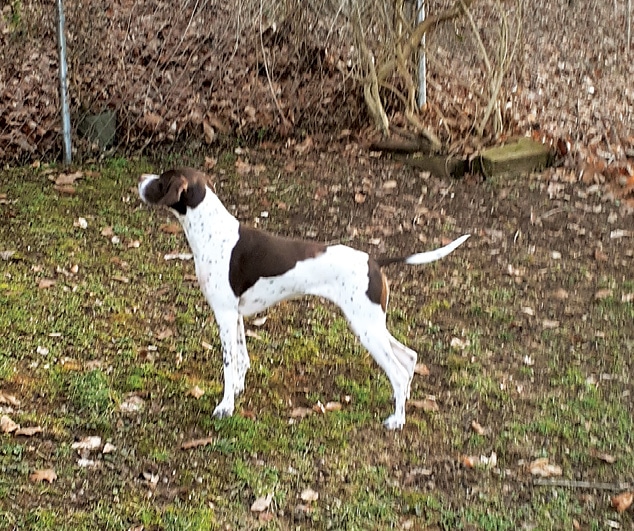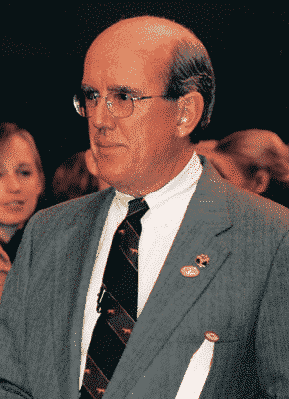
Home » How to judge Pointers?
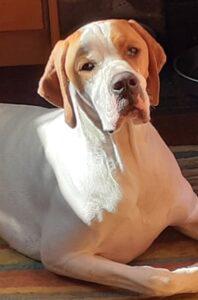 How to judge Pointers? It was late on Sunday evening and I had just returned from a show where I saw some incredible dogs being judged… well, incredibly!! My four-legged girls were all tucked in for the night when the phone rang. It was my friend, Joyce Mumford, who implored, “You’ve got to help me!” “With what?” says me, somewhat perplexed. “I need you to write an article on how to judge Pointers and I need it… now!” I said that it was late and that I had driven a long way and I was somewhat fuzzier than normal so, of course, I replied OK. She is my friend, after all, and she needed help… now! So here I sit, pencil in hand, late on a Wednesday evening, and I have finally realized that I don’t have a clue on how to write an article to tell you how to judge Pointers. I will, however, try to tell you how I judge Pointers.
How to judge Pointers? It was late on Sunday evening and I had just returned from a show where I saw some incredible dogs being judged… well, incredibly!! My four-legged girls were all tucked in for the night when the phone rang. It was my friend, Joyce Mumford, who implored, “You’ve got to help me!” “With what?” says me, somewhat perplexed. “I need you to write an article on how to judge Pointers and I need it… now!” I said that it was late and that I had driven a long way and I was somewhat fuzzier than normal so, of course, I replied OK. She is my friend, after all, and she needed help… now! So here I sit, pencil in hand, late on a Wednesday evening, and I have finally realized that I don’t have a clue on how to write an article to tell you how to judge Pointers. I will, however, try to tell you how I judge Pointers.
A good Pointer, when he enters your ring, has a bit of an attitude—a little bit of arrogance—with his head held high and his nostrils large and flared. A good Pointer is moderate in size; not too big and overdone (males 25″-28″ and females 23″-26″ at the shoulder), and not too refined. From the tip of his somewhat upturned nose to the tip of his shortish tail, he fits. He has good balance. He is in proportion. I judge good Pointers on the premise that shorter is always preferable to longer—EVERYWHERE. Shorter-backed is better than too long. Shorter loin is much better than too long. Shorter ears are way better than too long, and they should be somewhat pointed—never round—with thin, thin (almost see-through) soft leather. Not Foxhound-like—not ever!
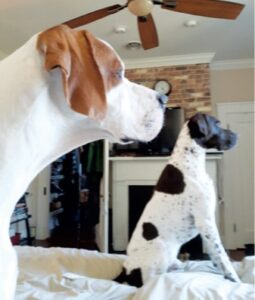 Our standard says that the tail is: “Heavier at the base, tapering to a fine point. Length no greater than to hock.” I find this to be fairly self-explanatory. You would be amazed at those who miss this point. It does not mean that the tail must come to the hock. It means what it says,
Our standard says that the tail is: “Heavier at the base, tapering to a fine point. Length no greater than to hock.” I find this to be fairly self-explanatory. You would be amazed at those who miss this point. It does not mean that the tail must come to the hock. It means what it says,
“… no greater than to hock.” Again, a shorter, or bee-sting, tail is better than a long tail and it will likely be straighter. Long gives a multitude of problems. They hang, as in an unhappy Bloodhound or, as they are often set on too high or level, they curl or worse, stick straight up at twelve o’clock. All are equally offensive.
The standard says, “Croup falling only slightly to base of tail.” This clearly means that the croup falls off “only slightly to base of tail.” The tail, therefore, should not come off level with the back. As he stands there, the picture of what you believe to be a good Pointer, you become concerned about his topline. It isn’t level. Well, good! It isn’t supposed to be. If it were, he couldn’t do the job he was bred to do. The standard says, “… slight rise from croup to top of shoulders. Loin of moderate length, powerful and slightly arched.” This “slightly arched” gives him his powerful drive and the ability to do his work effortlessly for hours on end.
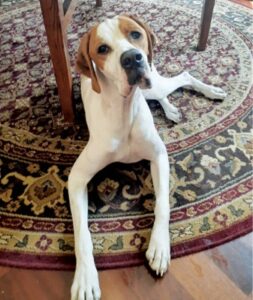 So, now we have a moderate-sized dog that is compact—all over—and has an attitude! Now we pray that when he moves, he is basically sound coming, going, and on the go-around, and doesn’t pick his front feet up too high, i.e., hackney.
So, now we have a moderate-sized dog that is compact—all over—and has an attitude! Now we pray that when he moves, he is basically sound coming, going, and on the go-around, and doesn’t pick his front feet up too high, i.e., hackney.
The standard says, “A good Pointer cannot be a bad color.” This does not mean that he can be purple!!! He can be liver and white, black and white, orange and white or lemon and white, with associated points to match—black noses and eye rims on the blacks and oranges, self-colored on the livers and lemons. He can even be solid-colored of any of the four colors listed previously. The quality of solid-colored Pointers has improved greatly over the past years. Though still not seen frequently, there are some very good ones on the horizon. Do not be afraid to award them, though please do it based on the standard and not their color. Most of the oldest books now available warn frequently about tri-colored Pointers carrying “too much of the Foxhound blood.” You may see one on occasion, and I handle it by quietly excusing them from the ring and writing in my judge’s book, “Excused. Color not addressed in standard.” Again, ears too long, tails too long. Now, look at his feet. This is a working dog with oval feet, not round, and with well-arched toes allowing him to work all kinds of ground effortlessly.
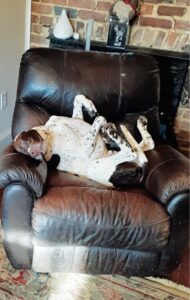 So, now what do we have? We have a moderately-sized dog that comes into your ring with his head held rather arrogantly. Your first impression is head, tail, and attitude. Next, he appears balanced, is in fit condition, and of the correct size. We know now that the standard says he can’t be a bad color; and he is one that is acceptable. Always look at a Pointer from all sides—coloring or patching can easily deceive and, for some reason, his “off-side” is often more pleasing to the eye. He moves around your ring with power and grace. His tail, we hope, will lash somewhat from side to side as he moves soundly on four good legs. When he stops, he looks at you with a soft, trusting expression. Lucky you… you’ve just judged a good Pointer. The others just won’t measure up. Enjoy.
So, now what do we have? We have a moderately-sized dog that comes into your ring with his head held rather arrogantly. Your first impression is head, tail, and attitude. Next, he appears balanced, is in fit condition, and of the correct size. We know now that the standard says he can’t be a bad color; and he is one that is acceptable. Always look at a Pointer from all sides—coloring or patching can easily deceive and, for some reason, his “off-side” is often more pleasing to the eye. He moves around your ring with power and grace. His tail, we hope, will lash somewhat from side to side as he moves soundly on four good legs. When he stops, he looks at you with a soft, trusting expression. Lucky you… you’ve just judged a good Pointer. The others just won’t measure up. Enjoy.
